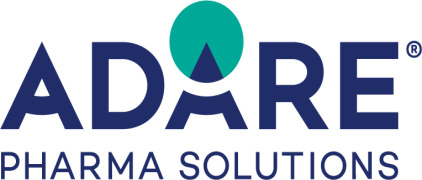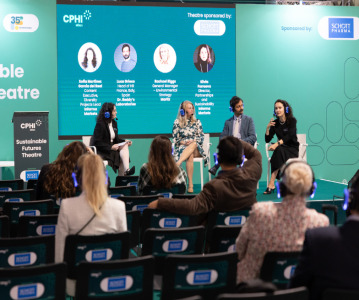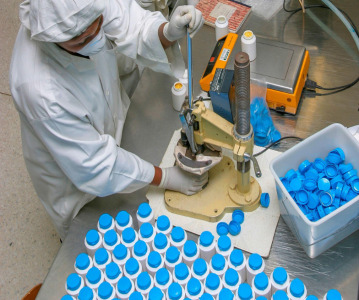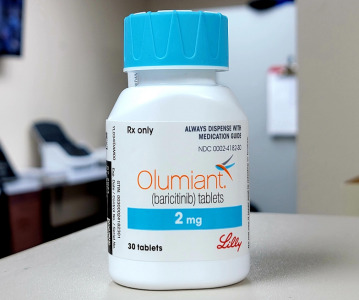Patient-centric medicines the way forward during COVID-19 crisis, say CPHI panel

Festival of Pharma roundtable discusses how drug delivery formulation and development is focused on hospital-to-home care setting
Working patient centricity into drug delivery will not just bring better outcomes for patients but will also help to alleviate strained healthcare systems battling against pandemics such as COVID-19, according to key stakeholders at a recent CPHI Festival of Pharma webinar.
The roundtable session, Patient Centricity – Beyond the Buzzword, sponsored by Adare Pharma Solutions, focused on trends and factors transforming the drug delivery landscape and how and where patient centricity can play a part.
Aurelio Arias, engagement manager, IQVIA, said that in some ways, the concept of patient centricity had potentially helped healthcare systems through the COVID-19 pandemic in that different medicines rather than the plain or cheapest standard of care were being used and they were displaying various benefits.
“We’ve seen the use of subcutaneous medicines over intravenous or using safer products that are easier for patients to administer at home or took the patient away from having to visit the hospital as frequently,” he said, giving the UK example of Abraxane being recommended over paclitaxel and docetaxel and the direct oral anticoagulants over warfarin.
“For me, it was really a key win, showing it’s not simply about having the cheapest medicine out there; you really need to have a broad spectrum of possibilities,” he added.
Asmita Khanolkar, senior director, Cambridge Pharma, SMC, highlighted three main patient centricity trends in the current drug delivery market.
Firstly she said, the transition from hospital to home care was progressing, with the focus on the drug side being how products can be delivered through auto-injectors or variable devices to minimize patient visits, or injected in larger volumes, as well as formulating some of the new biologics and cell and gene therapies into the market.
“On the device side, there’s been an explosion as we move towards more high-pressured systems and trying to bring in new devices to the market,” she said.
The second trend she identified was a convergence of technologies, with the medical industry and pharma industries utilizing information and communication technology such as smart devices, cloud computing and data analytics to be able to monitor chronic diseases.
“It can be monitoring and bringing in all this data through your phone or tablet into a web portal where the physician can be directly looking at the data in real time and monitoring some of the diseases and therapies and preventing any crisis situation in chronic diseases,” she added.
Finally, she identified personalized medicine as an emerging trend: “It’s not about one solution fits all - here we see some of the technology coming into the picture such as additive manufacturing where you can have very customized devices for different patient types or even artificial intelligence to collect and customize patient data through the insights and make the therapy very targeted.”
Surviving cancer patient, Heidi Floyd, executive director at Pink Power Moms, said that while advancements in patient centricity have been extremely positive, “one thing I’ve been alerted to is there are many people out there who still don’t have access to digital enablers. We’re talking about the underserved population, those in desperate financial need who don’t have the ability to get to their doctor, they don’t have high speed internet, or the technology to have access to that.”
She said that in the US, Latino and African American women are diagnosed at higher rates of breast cancer than white women: “That has raised a red flag for me. So, while we’re seeing the positive aspects of this, we’re also seeing the chasm that exists for those who have a desperate need.”
Terry Ernest, Senior Fellow, GlaxoSmithKline, said his company was trying to develop global medicines for diseases that are real in many parts of the world.
“We try to design our technology appropriately, because it may not be appropriate to develop a sophisticated, innovative type of device that actually restricts availability to certain regions of the world. In terms of manufacturing pharmaceuticals, we’re also looking at developing locally facilities that can develop and manufacture medicines where we’re able to meet the cost for the product manufacture much more comfortably in areas where the product is being supplied.”
With the COVID-19 pandemic pushing more patients to use oral formulations of drugs, the panel also discussed the impact this trend might have on certain patient populations.
“I’m sure we all agree adherence to a therapy is the driver for drug efficacy and can be ensured by designing a product that is easy to take and not requiring complex administration procedures that can become even more challenging during COVID times,” said Luigi Boltri, senior director pharmaceutical sciences, Business Support & New Technologies, Adare Pharma Solutions. “We’re talking about acceptability of a product and taste and swallowing play a major role.”

Related News
-
News Women in Pharma: Moving beyond discussions and into best practice at CPHI Milan
In this second CPHI Milan special of our monthly series, we cover the key takeaways from the Diversity & Wellbeing track held on October 10, 2024. -
News AstraZeneca invests in AI collaboration for cancer drug trials
The British-Swedish pharmaceutical giant is partnering with biotechnology firm Immunai Inc to increase the efficiency of some cancer drug trials. -
News Ozempic and Wegovy prices questioned as Novo Nordisk faces US Senate hearing
The CEO of Novo Nordisk was grilled during a US Senate committee hearing on September 24, 2024, in which the exorbitant prices of the Danish company’s blockbuster drugs Ozempic and Wegovy were called into question. -
News The BIOSECURE Act: implications for the pharma supply chain
On September 9, 2024, the US House of Representatives voted to pass the bill titled the BIOSECURE Act (the Act), which lists several Chinese companies in the pharmaceutical supply chain. The Act will prohibit American companies from contracting or doin... -
News On Track at CPHI Milan: Thermo Fisher Scientific Track Sponsor interview
With CPHI Milan just around the corner, we sat down with some of the sponsors for this year’s conference tracks to discuss the most pressing topics in pharma. -
News CPHI Milan Speaker Spotlight: Pharma Manufacturing and Localisation in Africa
In the run-up to CPHI Milan, we sit down with some of the experts and thought-leaders speaking at this year’s conferences. -
News US BIOSECURE Act passed by US House of Representatives
The controversial act, which has already impacted several foreign companies operating in the US, was passed by the House of Representatives on September 9, 2024. It is now headed for the US Senate before it can be signed into law by President Joe Biden... -
News Eli Lilly licenses rheumatoid arthritis manufacturing in Africa
American pharmaceutical company Eli Lilly has signed a partnership with Egyptian organisation Eva Pharma to localise manufacturing of rheumatoid arthritis treatments in Africa.
Position your company at the heart of the global Pharma industry with a CPHI Online membership
-
Your products and solutions visible to thousands of visitors within the largest Pharma marketplace
-
Generate high-quality, engaged leads for your business, all year round
-
Promote your business as the industry’s thought-leader by hosting your reports, brochures and videos within your profile
-
Your company’s profile boosted at all participating CPHI events
-
An easy-to-use platform with a detailed dashboard showing your leads and performance

.png)





